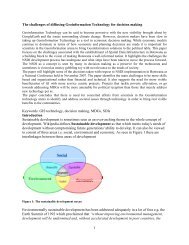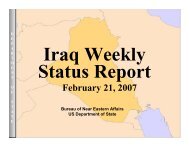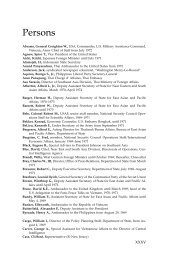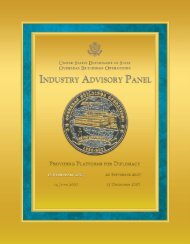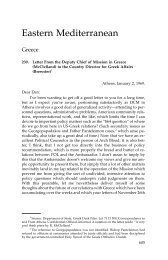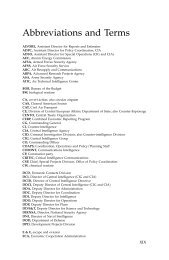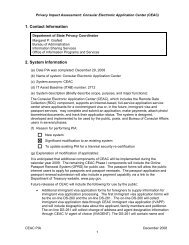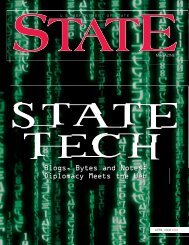Global Indicator Guidance Template - US Department of State
Global Indicator Guidance Template - US Department of State
Global Indicator Guidance Template - US Department of State
Create successful ePaper yourself
Turn your PDF publications into a flip-book with our unique Google optimized e-Paper software.
OBJECTIVE: PROGRAM AREA:<br />
GOVERNING J<strong>US</strong>TLY AND DEMOCRATICALLY CIVIL SOCIETY<br />
ELEMENT: GJD 4.1 – STRENGTHEN DEMOCRATIC CIVIC PARTICIPATION<br />
INDICATOR TITLE: NUMBER OF PEOPLE WHO HAVE COMPLETED <strong>US</strong>G ASSISTED CIVIC<br />
EDUCATION PROGRAMS<br />
DEFINITION:<br />
Programs are designed to promote understanding the democratic process. A<br />
“program” may be a course, seminar, training or school-based class <strong>of</strong> any<br />
length.<br />
RATIONALE:<br />
Better citizen understanding <strong>of</strong> democratic processes & the role <strong>of</strong> civil society is<br />
essential to a functioning democracy. This indicator measures output <strong>of</strong><br />
programs designed to foster democratic political culture.<br />
UNIT:<br />
Number <strong>of</strong> people<br />
TYPE: OUTPUT/OUTCOME<br />
Output<br />
DATA SOURCE:<br />
Post or implementing partners<br />
MEASUREMENT NOTES:<br />
DISAGGREGATE BY:<br />
Sex<br />
DIRECTION OF CHANGE:<br />
Higher = better<br />
ELEMENT: GJD 4.1 – STRENGTHEN DEMOCRATIC CIVIC PARTICIPATION<br />
INDICATOR TITLE: NUMBER OF PARTICIPANTS IN <strong>US</strong>G-FUNDED PROGRAMS SUPPORTING<br />
PARTICIPATION AND INCL<strong>US</strong>ION OF TRADITIONALLY MARGINALIZED ETHNIC MINORITY<br />
AND/OR RELIGIO<strong>US</strong> MINORITY GROUPS<br />
DEFINITION:<br />
Number <strong>of</strong> participants engaged in <strong>US</strong>G programs that have within their<br />
objectives the promotion <strong>of</strong> leadership, skill-building, decision-making, civic<br />
participation, mobilization, and organization by traditionally marginalized ethnic<br />
minority and/or religious minority groups. These programs may be in any sector<br />
(such as health, democracy and governance, environment, education, etc.), but<br />
they must have a significant emphasis on giving the traditionally marginalized a<br />
voice and active role in public policy, decision-making, and in program design,<br />
implementation, and evaluation.<br />
RATIONALE:<br />
While many <strong>US</strong>G programs may include ethnic and religious minorities as<br />
beneficiaries, it is important to discern which actually promote their leadership<br />
and active engagement in civil society and how many participants are involved in<br />
these efforts.<br />
UNIT:<br />
Number <strong>of</strong> participants<br />
TYPE: OUTPUT/OUTCOME<br />
Output<br />
DATA SOURCE:<br />
Post or implementing partners<br />
MEASUREMENT NOTES:<br />
DISAGGREGATE BY:<br />
Sex<br />
DIRECTION OF CHANGE:<br />
Higher = better<br />
60




